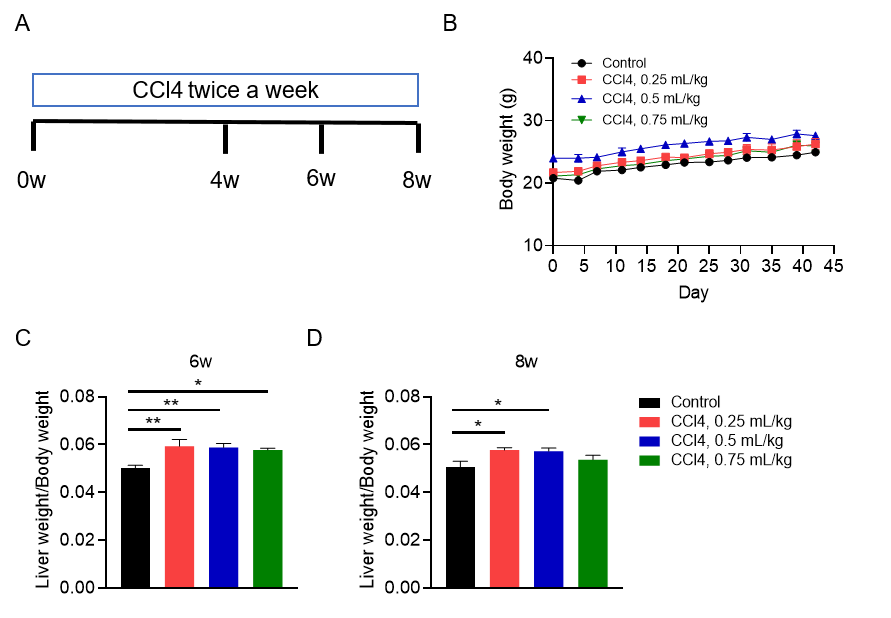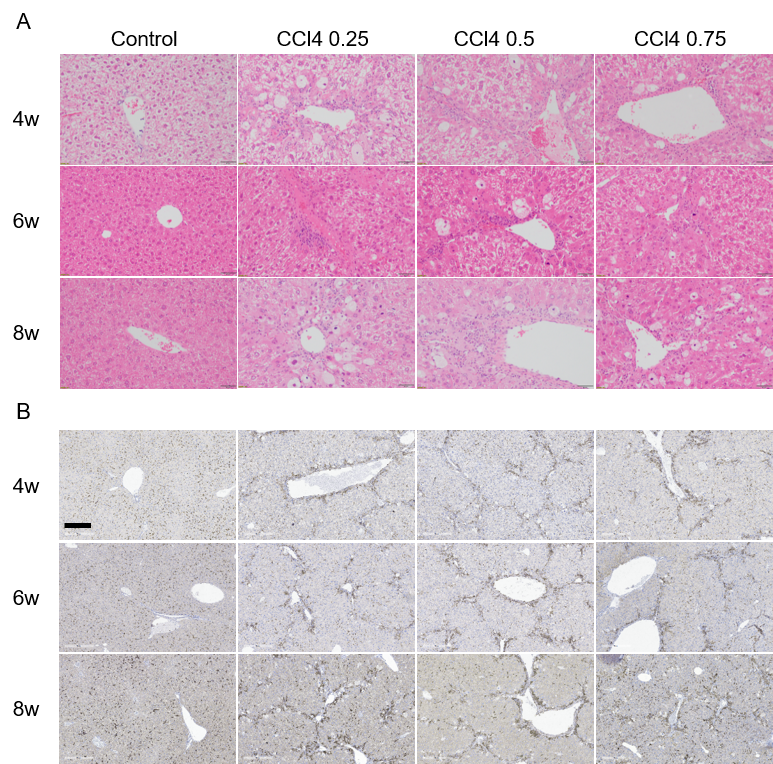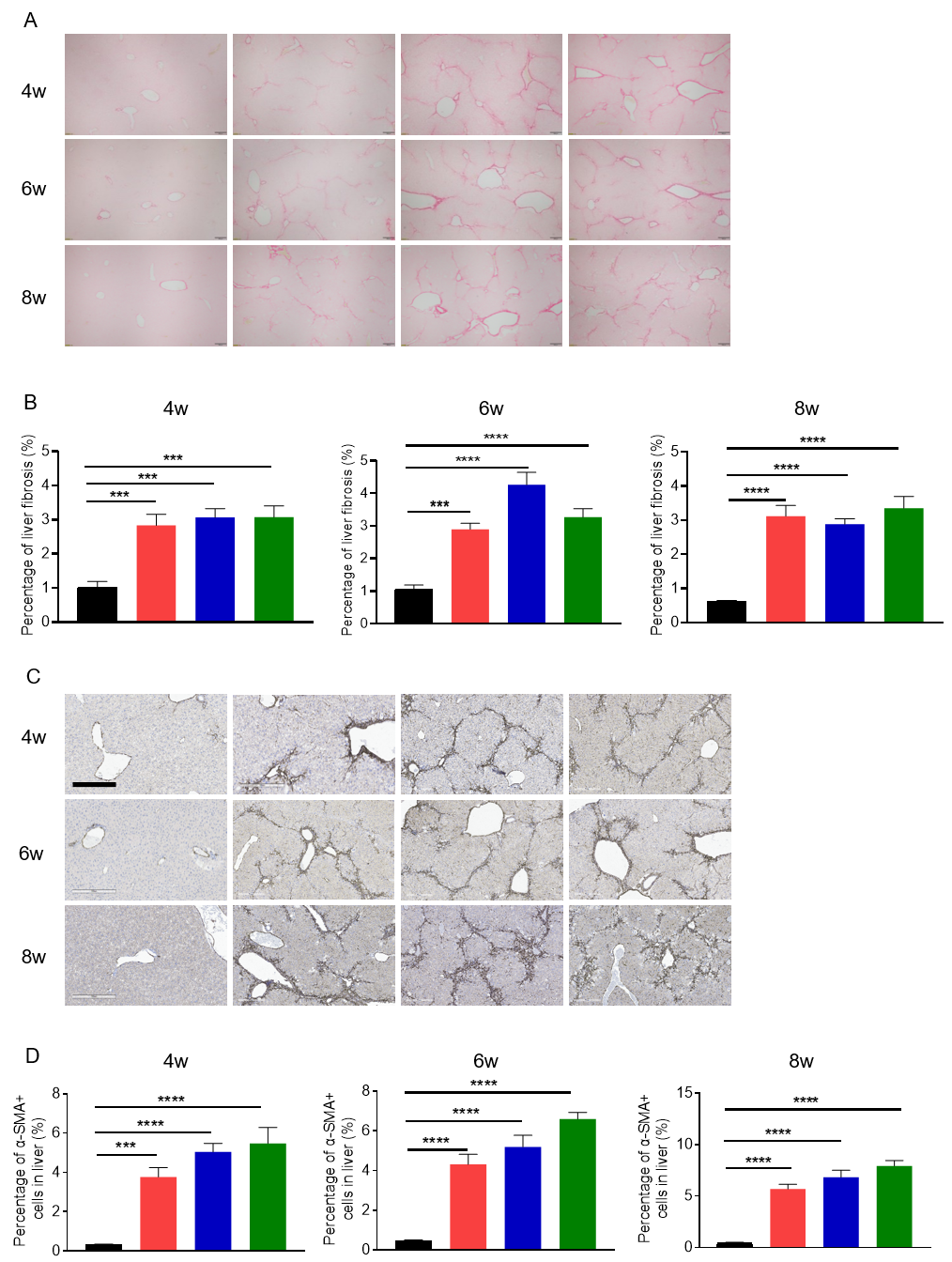Carbon tetrachloride (CCl4) -induced liver fibrosis and cirrhosis in mice is a widely accepted experimental model to study liver fibrosis and cirrhosis. α-SMA expression, stellate cell activation and key matrix components including collagen-1, matrix metalloproteinases and their inhibitors TIMPs. CCl4 induction elicits a reproducible and predictable fibrotic response in the liver, making it valuable for preclinical pharmacological studies of anti-fibrotic and anti-cirrhotic therapies and pathophysiological studies of liver fibrosis-cirrhosis-liver cancer changes.

(A) Experimental timeline for CCl4 induction of NASH. 8-week-old male C57BL/6 mice were injected intraperitoneally with CCl4 at the following concentrations: 0.25, 0.5 and 0.75 mL/kg twice a week. Blood biochemical and histological staining was performed at 4 weeks, 6 weeks and 8 weeks after induction, respectively. (B) Mouse body weight; (C-D) Liver weight to body weight ratio at 6 and 8 weeks of induction, respectively. The results indicate that liver weight was significantly increased in the CCl4-induced group compared with controls. Data are mean ± SEM, n = 5.


(A) H&E staining of liver tissue sections fwas performed at 4 weeks, 6 weeks and 8 weeks after induction with different concentrations (0.25 mL/kg, 0.5 mL/kg, 0.75 mL/kg) of CCl4, respectively; representative sections are shown here (n=5).(B) immunohistochemical detection of F4/80, a marker of liver macrophages. The results showed that HE staining of liver tissue sections showed extensive hepatocyte steatosis, ballooning degeneration and intralobular inflammation; the frequency of hepatic macrophages was significantly increased compared with the CCl4-induced control group. These are typical pathological changes in NASH.


1. Scholten, D., Trebicka, J., Liedtke, C. & Weiskirchen, R. The carbon tetrachloride model in mice. Lab Anim 49, 4-11 (2015).
2. Hernandez-Perez, E., Leon Garcia, P.E., Lopez-Diazguerrero, N.E., Rivera-Cabrera, F. & Del Angel Benitez, E. Liver steatosis and nonalcoholic steatohepatitis: from pathogenesis to therapy. Medwave 16, e6535 (2016).
3. Tsuchida, T., et al. A simple diet- and chemical-induced murine NASH model with rapid progression of steatohepatitis, fibrosis and liver cancer. J Hepatol 69, 385-395 (2018).
4. Farrell, G., et al. Mouse Models of Nonalcoholic Steatohepatitis: Toward Optimization of Their Relevance to Human Nonalcoholic Steatohepatitis. Hepatology 69, 2241-2257 (2019).









